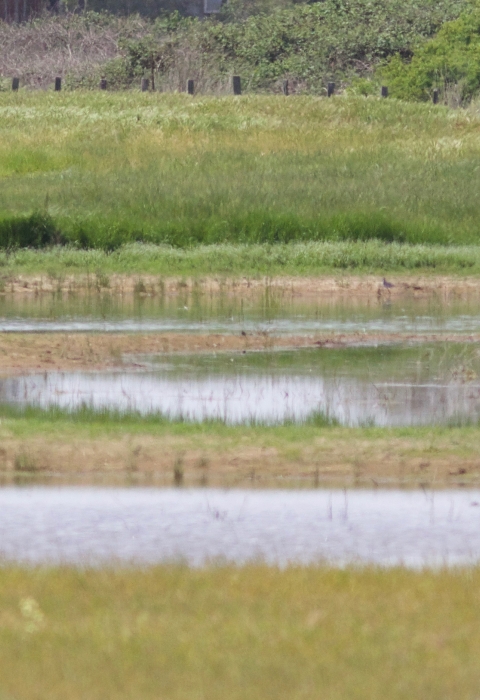SACRAMENTO, California - The U.S. Fish and Wildlife Service has determined that the western spadefoot (Spea hammondii) is comprised of two genetically and geographically distinct population segments and is seeking public comment on its proposal to list both distinct population segments (DPS) as threatened under the Endangered Species Act (ESA). Critical habitat for the species will be proposed at a later date.
While often called a toad, the western spadefoot is not a true toad. It is distinguished from true toads by eyes with vertical pupils and teeth in the upper jaw. Western spadefoots have smooth, olive-colored skin and may have four light-colored stripes. Western spadefoots dig underground burrows using a powerful, sharp-edged spade on each hind foot and live in these burrows for 8 to 10 months out of the year. The sound of steady rainfall stirs them out of their burrows to breed and forage in nearby vernal pools, ponds and creeks.
The Service evaluated the conservation status of the northern DPS and southern DPS of western spadefoot separately after the best available science showed they are genetically and geographically distinct. The northern DPS is found from Shasta County through the Central Valley, and down the coast from Santa Clara County to Santa Barbara County. The southern DPS is found from Los Angeles County to northwestern Baja California, Mexico. The Transverse Range separates the northern DPS from the southern DPS.
The Service is proposing to list both the northern DPS and the southern DPS of western spadefoot as threatened due to habitat loss, fragmentation and degradation due to development and land conversion; predation by nonnative species such as bullfrogs; and the effects of climate change climate change
Climate change includes both global warming driven by human-induced emissions of greenhouse gases and the resulting large-scale shifts in weather patterns. Though there have been previous periods of climatic change, since the mid-20th century humans have had an unprecedented impact on Earth's climate system and caused change on a global scale.
Learn more about climate change , such as an increase in the frequency, intensity and duration of drought and wildfire.
“The western spadefoot is facing significant challenges throughout California. We’ve determined this species would benefit from federal protection and recovery resources provided under the Endangered Species Act,” said Michael Fris, field supervisor of the Service’s Sacramento Fish and Wildlife Office.
With the proposed listing of the species, the Service also is proposing a 4(d) rule for both the northern DPS and southern DPS that provides exceptions to the prohibition of take under the Endangered Species Act for activities including fuels management that reduces the risk of large-scale high-severity wildfire; establishing and maintaining required minimum defensible space from homes or structures; routine livestock ranching activities on private lands; and certain livestock grazing actions used as a habitat management tool. These activities are proposed in the 4(d) rule because they can have beneficial or only negligible impacts to the spadefoot.
The Service has been working with partners on efforts intended to conserve and improve habitat for the western spadefoot. Some of these efforts include coverage in the Service’s statewide recovery plan for vernal pool ecosystems of California and southern Oregon, as well as 15 habitat conservation plans in California. The western spadefoot is also included in several Integrated Natural Resource Management Plans, which outline conservation actions that will take place on lands managed by the military.
“Our goal is to help the western spadefoot thrive across California in the future,” said Fris. “We look forward to active collaboration with our partners to meet this vision and help this species recover.”
Today’s announcement comes as the ESA turns 50 years old in 2023. Throughout the year, the Department of the Interior is celebrating the importance of the ESA in preventing the extinction of imperiled species, promoting the recovery of wildlife and conserving the habitats upon which they depend. The ESA has been highly effective and credited with saving 99% of listed species from extinction. Thus far, more than 100 species of plants and animals have been delisted based on recovery or reclassified from endangered to threatened based on improved conservation status, and hundreds more species are stable or improving thanks to the collaborative actions of Tribes, federal agencies, state and local governments, conservation organizations and private citizens.
The Service is seeking public comment on its proposal to list the northern DPS and southern DPS of western spadefoot. The documents will publish in the Federal Register on December 5, 2023. The publication will open a 60-day public comment period. The Service will consider comments from all interested parties received by February 5, 2024. The proposal and information on how to submit comments can be found on www.regulations.gov by searching under docket number FWS–R8–ES–2023–0095.


